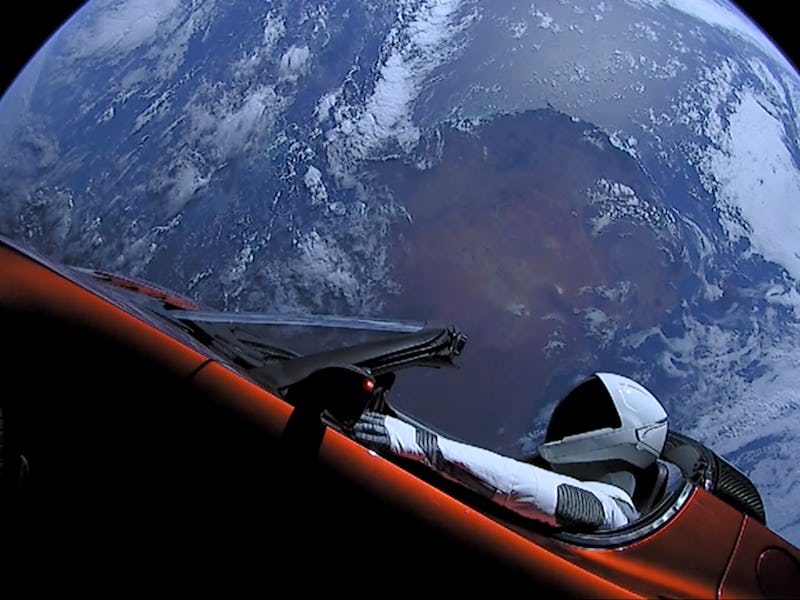Where is Starman? Elon Musk's Tesla Roadster makes its way past Mars
SpaceX CEO Elon Musk launched his own first-generation Tesla Roadster into space back in February 2018. It's been on an impressive journey since.

"Starman," the dummy in the driver's seat of Elon Musk's Tesla Roadster, has been on quite the journey.
The electric car first launched into space on February 6, 2018 — an event that captured stargazers' imaginations.
The website WhereIsRoadster has since tracked the car's trip around the Solar System. At the time of writing, the website estimates that the car is currently making its way past Mars: it's around 5.9 million miles from the Red Planet, and moving at around 10,400 mph — just as well there's no speed limits for cars in space.
Earlier this year, SpaceX reported the car had made its first close approach with Mars. On October 7, the company claimed via Twitter the Roadster came within five million miles, or 0.05 astronomical units, of Mars.
The WhereIsRoadster website estimates the approach happened at around 3:25 a.m. Eastern.
"Starman" is moving through space at rapid speed. The tracker shows the car is moving at around 55,700 miles per hour, "driving" 1.3 million miles around the Sun. That's the same distance as if the Roadster covered Earth's roads some 58 times over.
The car is perhaps SpaceX's most bizarre launch ever — but it had a serious purpose.
The launch was aimed at testing the Falcon Heavy, which ranked as the world's most powerful operational rocket with around five million pounds of liftoff thrust. Musk used his personal car as a payload, kitted out with a dummy wearing a SpaceX spacesuit.
"Starman" in the car.
The car is packed with cultural references. The in-car sound system plays David Bowie's "Space Oddity" on loop, while the dashboard has the words "Don't Panic" etched in it as a reference to Douglas Adams' novel Hitchhiker's Guide to the Galaxy. Were they a real person, "Starman" would've likely grown tired of Bowie – the song has looped around 267,000 times, if it is still playing that is.
The car also contained a “5D quartz laser storage device,” produced in collaboration with the Arch Mission Foundation, that held Isaac Asimov's Foundation book trilogy.
“Maybe discovered by some future alien race thinking what the heck, what were these guys doing?" Musk told reporters at the Kennedy Space Center after the launch. "Did they worship this car? Why do they have a little car in the car? And that’ll really confuse them.”
Where next for "Starman?" It's currently some 128 million miles from the Sun, moving toward the star at 14,000 mph. It's so far completed around 1.8 orbits. It's not expected to drive by Mars again until 2035, WhereIsRoadster creator Ben Pearson wrote on Twitter.
While it's hard to say for sure whether "Starman" is enjoying the journey, the car itself is likely in a pretty terrible condition. William Carroll, a chemist at Indiana University, told LiveScience in the days after the launch that radiation will cut and tear organic materials, like the rubber tires.
"Those organics, in that environment, I wouldn't give them a year," he told the publication. The materials most likely to survive are the aluminum frame, other metals, and the glass — if it can avoid meteor impacts.
Tesla is developing the second-generation Roadster, the sequel to its first-ever electric car. The car will likely hit roads in 2022, feature acceleration of 0 to 60 mph in less than two seconds, and offer around 620 miles of range on a single charge.
With SpaceX working hard on Starship for its future missions to Mars, perhaps there's scope to send another Tesla careering around the Solar System?